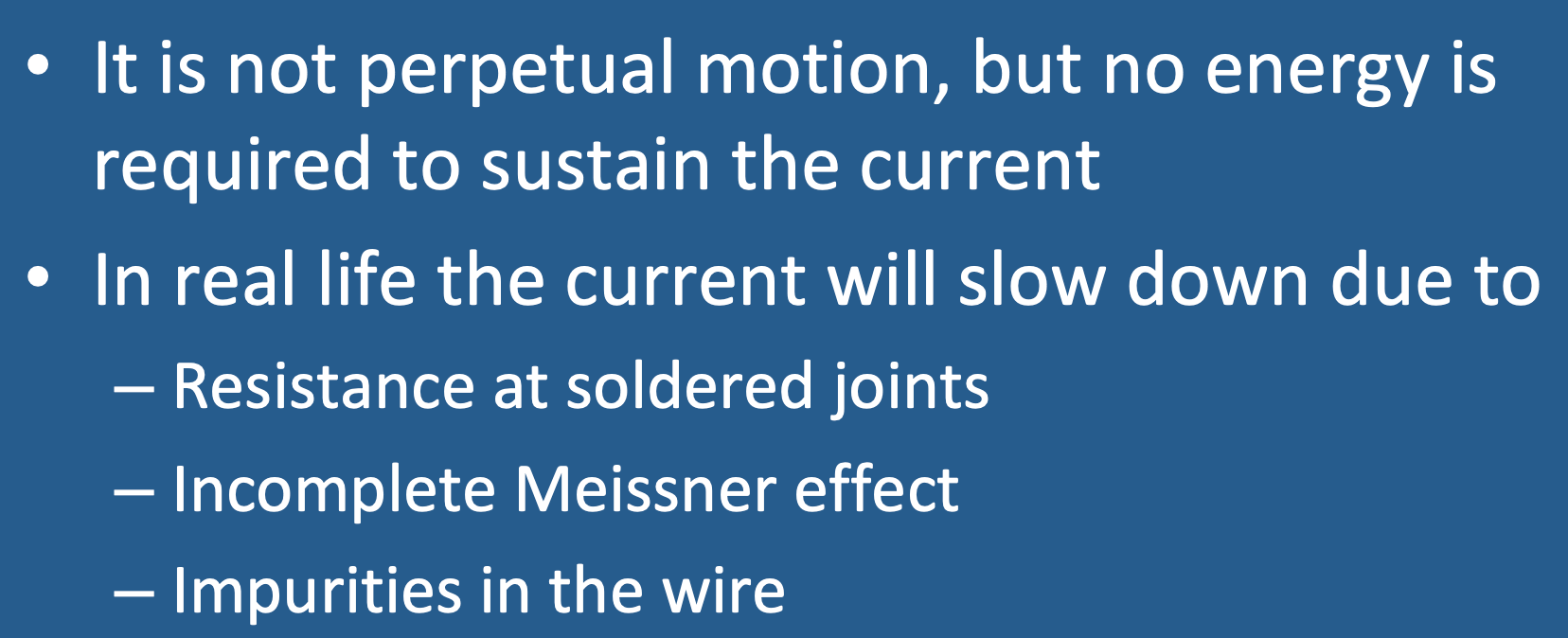oOnce a current is established in an ideal superconducting loop of wire and the temperature is maintained below the critical temperature for superconductivity, Tc, it should never die out, at least in theory.
In a real-life MR scanner or other superconducting device, however, this idealized situation is not quite realized and the current will eventually die out, albeit very slowly.
First, the loops of wire are not perfect, containing small defects, inclusions of foreign elements, and grain boundaries. The wires are also connected together at their ends by a soldered joint. These imperfections add a finite amount of resistance to the circuit.
Secondly, NbTi (as well as other conductors that are not simple elements) is a Type II superconductor. In Type II superconductors the Meissner effect does not completely eject all of the magnetic field from the wire. Small magnetic flux vortices penetrate the outer layers of the wire, also producing resistance to current flow.
The tiny resistances created by imperfections and incomplete Meissner effects result in loss of magnetic field over time. The resistance is tiny, on the order of pico-ohms. The rate of field decay is likewise minuscule − on the order of 1 mT per year − so for all practical purposes the current in a superconductive MR scanner never dies away from "natural causes".
In a real-life MR scanner or other superconducting device, however, this idealized situation is not quite realized and the current will eventually die out, albeit very slowly.
First, the loops of wire are not perfect, containing small defects, inclusions of foreign elements, and grain boundaries. The wires are also connected together at their ends by a soldered joint. These imperfections add a finite amount of resistance to the circuit.
Secondly, NbTi (as well as other conductors that are not simple elements) is a Type II superconductor. In Type II superconductors the Meissner effect does not completely eject all of the magnetic field from the wire. Small magnetic flux vortices penetrate the outer layers of the wire, also producing resistance to current flow.
The tiny resistances created by imperfections and incomplete Meissner effects result in loss of magnetic field over time. The resistance is tiny, on the order of pico-ohms. The rate of field decay is likewise minuscule − on the order of 1 mT per year − so for all practical purposes the current in a superconductive MR scanner never dies away from "natural causes".
References
Ginsberg DM. Superconductivity. Encyclopedia Britannica on-line.
Superconduction.org website. (Good explanations of superconductivity and the latest news about room temperature superconductors and other advances in the field).
Ginsberg DM. Superconductivity. Encyclopedia Britannica on-line.
Superconduction.org website. (Good explanations of superconductivity and the latest news about room temperature superconductors and other advances in the field).
